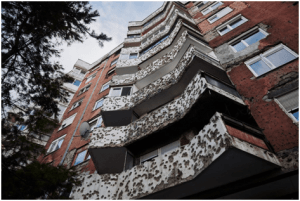City where east kisses the west. Jerusalem of Europe. Those are the terms most often used to describe Sarajevo, capital of Bosnia and Herzegovina. This charming city has something for everyone. Amazing history, delicious food, vibrant culture and really nice people are all things that you can find in Sarajevo. If you decide to visit this magical city, you should try not to miss out on any of the following 10 things:
1.Baščaršija
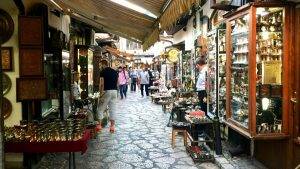
Meaning “head marketplace” in Turkish, Baščaršija is one of the oldest parts of Sarajevo. When the city was founded in 1450s, after Bosnia was conquered by the Ottoman Empire, a number of key objects were bulit. A mosque, a public bathroom, and an inn. Some of those objects were bulit where Baščaršija is today. Even though the Ottomans left a couple of centuries ago, on Baščaršija, with it’s tiny streets and smell of coffee in the air, you can still feel their very oreintal influence.
2.Latin bridge
One of the things that Sarajevo is well-known for is the assassination of Archduke Franz Ferdinand, the event that sparked the outbreak of the First World War. The assassination took place near the Latin Bridge. It is quite a strange and fascinating feeling to walk on such an important place in the world history. If you want to learn more details about the assassination, you can visit the Museum of assassination, right next to the bridge.
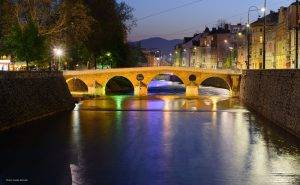
- Sarajevo City Hall
City Hall is one of the most prominent symbols of Sarajevo. It is also one of the most stunning examples of Austo-Hungarian architecture in the city. It was initially bulit in 1886. After the Second World War it was used as a National Library, but unfortunatly it burnt down in 1992 during the war. It was reopened in 2014 and now it’s being used as a museum.
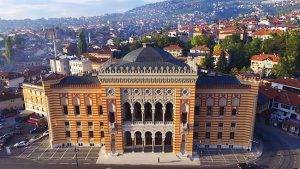
4.Yellow Fortress
If you are looking for a beautiful view, you should probably go to the Yellow Fortress. Located just 10 minutes from the city center, Yellow Fortress was built by the Ottomans in the 18th ccentury, to protect the city. There is also a restaurant on top of it, so you can grab a bite while you enjoy the sunset.

5.Abandoned Bobsled Track
Located on the Mount Trebević, right above the city is the abandoned bobsled track. It was built for the 1984 Winter Olimpic Games that Sarajevo hosted. Unfortunatly, it hasn’t been used ever since, so it is clearly no longer used for that purpose. But, it is quite a cool sight. There are many graffiti on it now, and you can walk up and down it.

6.Eternal Flame
The Eternal Flame is a memorial deciated to the millitary and civillian victims of the Second World War in Sarajevo. It was built on April 6th 1946, the first anniversary of the liberation of Sarajevo from the occupation of Nazi-Germany.

- Old Jewish Cemetery
Located on one of the hills above Sarajevo is the second largest jewish cemetery in Europe. It was established by Sephardic Jews during the Ottoman era, most likely early 17th century. It was closed for burial in 1966, with estimated four thousand graves existing on the cemetery.

- Vrelo Bosne
On the outskirts of the city there is a public park called Vrelo Bosne, featuring the spring of the River Bosnia. It’s a wonderfull place to get away from the noise and just enjoy the peace and nature. Also, you can drink the water directly from the spring.
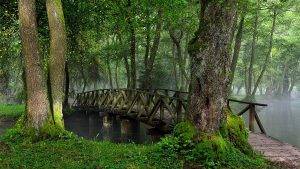
- Tunnel of Hope War Museum
Out of all the museums in Sarajevo (and there are many) you can’t miss out on visiting this one. Sarajevo Tunnel or Tunnel of Hope was constructed during the siege of Sarajevo in 1993 by the Bosnian army. They built it so the people of the city could get basic supplies, like food and medication from the free teritorry of the Mount Igman. Many people todax agree that the tunnel is what saved Sarajevo. In this museum you can learn all about the tunnel, as well as what was it like in Sarajevo during those horroric 1425 days of the siege.
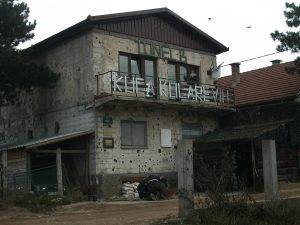
- Grbavica
To the people of Sarajevo, this neighbourhood has so much symbolism. It is one of the typical Yugoslav disctricts, where you can see the typical socialist architecture. Also, you can see a lot of the damage left over from the war, since Grbavica was a neighbourhood where many street battles took place in between 1992 and 1995. You can also see a football stadium, home to the FK Željezničar, one of Sarajevo’s local footbal clubs.
